|
The spring season according to the Five Elements Theory in TCM belongs to the Wood element and is the time of regrowth, rebirth, regeneration, and expansion. During the springtime, many people suffer from seasonal allergies or allergic rhinitis, also commonly known as hay fever. Not only in the Spring season, but the allergy symptoms can also happen in the summer and fall seasons. So how does TCM understand seasonal allergies and how can acupuncture treat the problem?
Our body is formed by a network of communication systems which are called the meridian systems. These meridian systems are named after specific organs in our body. For allergic rhinitis or hay fever, the meridian system that's involved is called the Lung meridian system. Allergic rhinitis occurs because there is an obstruction in our Lung meridian system caused by exterior conditions while the vital energy of our Lung system is deficient and unable to consolidate these conditions. Note that the Lung system in TCM is not confined to the lung organs specified in Western medicine. There could be several pathogenesis paths that lead to the Lung system insufficiency including our genetics, chronic Lung disease, excessive or insufficient physical activities, or emotional influences, as well as influences by other meridian systems. Acupuncture has been proven as an effective treatment for allergic rhinitis through controlled trials by the World Health Organization. Ideally, the best time to treat allergic rhinitis with acupuncture is one month before the symptoms start. The acupuncture treatment course for allergic rhinitis varies from patient to patient. Some people may see immediate relief and some after a few treatments. Generally, for acute conditions, we may recommend once to twice per week over a course of six to ten treatments. For chronic conditions, we may recommend further treatment courses. Reports have shown that acupuncture treatment is a good complementary medicine in addition to allergy medications. Your acupuncture treatment will focus on restoring and strengthening the Lung meridian system that dominates the vital energy of the body and removing any obstruction and excess conditions. For more information as to how to relieve your seasonal allergies, please contact us to further inquire how best we could help you
0 Comments
PAIN IN TRADITIONAL CHINESE MEDICINE
Pain is something that everyone will experience at least once during their lifetime. It is probably one of the most commonly seen symptoms in the clinic. In Western Medicine, pain is one of the hallmark signs and symptoms of inflammation in addition to warmth, redness, and swelling. According to Mosby's Medical Dictionary, "Pain is a subjective feeling and an individual response to the cause." So what is pain in Traditional Chinese Medicine? In TCM, we analyze all signs and symptoms according to the TCM eight principles which are derived from the theory of Yin and Yang. These eight principles include interior-exterior, excess-deficiency, cold-heat, and of course Yin-Yang. The symptoms and the progressive development of a pathology fit within the guidelines of these eight principles when TCM practitioners analyze a patient's case and ask the patient questions. Our body consists of carefully constructed, invisible lines which we call acupuncture meridian pathways. These pathways, just like highways, run up and down, left and right, and in and out of our body forming networks and a holistic communication system throughout our entire body. Along these pathways, there are certain areas where the Qi (vital energy) and blood are gathered the most, more superficial, and easier to access. These areas are called acupuncture points. The acupuncture points are used to regulate the functions and vital energy of our body. The Chinese say that "if it is impassable, then there is pain; if there is no pain, then it is passable." Pain occurs when there is an obstruction which is an excessive condition. Pain could also occur when there is malnourishment of the sinews and tendons which is a deficient condition. There are treatment protocols for each condition on a case-to-case basis. It is noticed, however, today it is very difficult to draw a clear line as to what category a person's pain belongs. It is usually a combination of two sides of the parameter or parameters. The above guidelines are only the first step in analyzing the pathology. The progression of the disease as indicated is usually very complex and multidimensional. TCM practitioners would use the eight principles to properly assess, diagnose and provide a treatment plan for their patients. To learn more on how to get treated for your pain syndromes with acupuncture, please contact Tee Acupuncture. We are here to help and would be happy to discuss and answer your questions or concerns 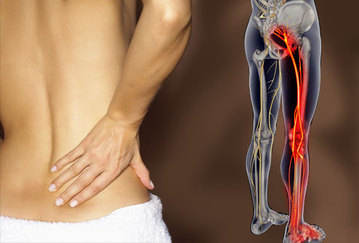 Having been a sciatica patient myself, I understand how much pain and discomfort that sciatica could bring to your life. The most common symptoms are low back pain that travels from one side of the hip and buttock areas down one leg with a burning and/or shooting sensation (sometimes both legs are involved). The symptoms may appear suddenly or gradually and could last for days or even weeks. Sometimes the symptoms may get worse when sitting for a long period, or during coughing or sneezing. Lower back pain, however, does not always involve the sciatic nerve problem. So what is sciatica? Sciatica is a type of radiating back pain in the distribution of the sciatic nerve. The sciatic nerve is one of the largest nerves that runs from the lower back area down the back of the leg to the foot. There will be certain evaluation tests that your healthcare provider or doctor will perform on you. The pain can be severe but usually resolved in a few weeks with conservative treatments. Sciatica could be caused by various reasons. It is commonly a result of an intervertebral disk herniation causing nerve compression in the low back spine. This intervertebral disk is a gel-like cushion that provides shock absorption and flexibility between the vertebrae in the spine. As a person ages, these gel-like cushion disks get worn out and weaker and will be more vulnerable and susceptible to get injuries causing nerve compression such as one in the sciatica condition. This compression causes pain, inflammation, and sometimes numbness in the affected side. Another reason for sciatica includes spinal stenosis in which the spinal canal inside the vertebrae gets narrowed and adds pressure to the nerves that pass through this canal. Once this canal is narrowed, symptoms such as sciatica may happen. Spinal canal narrowing conditions are usually more common in elderly people. Other causes of sciatica include piriformis syndrome, spinal tumors or injuries, and pregnant women adding pressure on the sciatic nerve during pregnancy. According to the World Health Organization (WHO), acupuncture treatment has been proven through controlled trials to be effective for treating sciatica. Back pain has been reportedly ranked the No. 1 reason for people seeking acupuncture treatment. Another report by the National Institute of Health shows and concludes that acupuncture can relieve the symptoms of sciatica (see report here). In addition, recommendations have been made along with guidelines from the American Pain Society and American College of Physicians that doctors should consider acupuncture as an alternative therapy for patients with chronic low back pain that conventional treatment cannot provide results (see report here). If you need acupuncture treatment and would like to discuss how acupuncture can help relieve your low back pain and sciatica, please feel free to contact me. (#sciatica, #pain, #acupuncture, @WHO, #backpain, #sciaticnerve, #lowbackpain) References: Image from WebMD.com 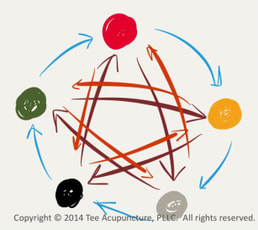 While I was attending my Master's degree in Acupuncture, I took a course named "#TCM #Psychology". The course was very interesting and I enjoyed it. During the course, our professor explained that people's personalities and faces could be categorized into "Five Phases" 五行學說 and I was very much amazed to learn that. The theory of Five Phases, like the theory of Yin-Yang, defines the foundations of Traditional Chinese Medicine (TCM). Our Chinese ancestors believed that everything in this universe is closely related to the environment and throughout the long-term observations our ancestors put together the theory of Five Phases, and associated human beings including their body structures, personalities, health conditions, birth dates, etc. into the Five Phases. Here let's discuss some of the theory. “Wu Xing Xue Shuo” 五行學說, which is also known as the “Five Phase Theory”, is one of the most fundamental theories and traditional philosophies that the ancient Chinese ancestors discovered and developed through many generations with lifelong observation of the universe, nature and human being. In 350-270 B.C., Zhou Yan initiated this theory along with the Yin-Yang theory. The five phases are Wood 木, Fire 火, Earth 土, Metal 金, and Water 水. In the Five Phase theory, there are an inter-promoting relationships between the elements. For example, Metal (Lung) is the mother of Water (Kidney), and Water is the son of Metal while Metal is the son of Earth (Spleen). In addition, there are also controlling relationships. For example, Metal controls Wood (Liver) but Metal is controlled by Fire (Heart). Each of these five phases has its unique characteristics, related functions and qualities, and together they have interrelationships such as generating, controlling, over-acting or over-controlling, and insulting each other (as shown in the diagram) and some of which are indicated above. Different colors are also categorized into these Five Phases. The color black belongs to Water, the color green to Wood, the color red to Fire, the color yellow to Earth, and the color white (gray here) to Metal. All phenomena in this world and in the universe can be explained and categorized within these five phases or elements, and all things are considered manifestations of these five phases. However, the meaning of the Five Phases theory is far beyond than just the five basic elements indicated above. One should ascertain that these five phases are not only five basic elements, but they are also five dynamic, interchangeable, and interrelated systems. These elements have interrelationships as mentioned above and are often used in medicinal references and the organ systems when performing a syndrome analysis and diagnosis, as well as treatment principles. The philosophical theory of Five Phases has been widely used in traditional Chinese medicine to describe the medicinal influence in human physiology, pathology, psychology, diagnosis, treatment, and herbology. However, the bottom line and main key is still “balance.” The traditional Chinese medicine mainly emphasizes on the holistic approach and the balance of Yin and Yang which are the roots of all the phenomena in the universe. Anything in this world requires a balance. For example, balancing your car tires, balancing your business finance, balancing your daily nutritional diets, etc. So balance means nothing is too much or too little. The Chinese philosophies have always been centralized and emphasized on the notion of balance, hence, the Doctrine of Mean (“Zhong Yong Zhi Dao”,中庸之道). Therefore, the balance within the single element system itself should be maintained while the balance among the five element systems should also be kept in order to maintain a healthy human constitution both physiologically and psychologically. Any imbalance within its own system functions or between any of the five element systems could lead to many potential complications. In the first chapter of the Su Wen 素問 (Basic Questions) volume of Huang Di Nei Jing 黃帝內經 (the Yellow Emperor’s Inner Classics), Qi Bo 岐伯 states that “in the past, the people practiced Tao, the Way of Life. They understood the principle of balance as represented by the transformations of the energies of the universe. They formulated exercises to promote energy flow to harmonize them with the universe. They ate a balanced diet at regular times, arose and retired at regular hours, avoided overstressing their bodies and minds, and refrained from overindulgence of all kinds. They maintained well-being of body and mind; thus, it is not surprising that they lived over one hundred years of age.” From this passage, we see that the principle of balance is the key to a healthy constitution and it is very important to maintain a balanced lifestyle and mindset which perhaps is also the Doctrine of Mean of life in general. According to the World Health Organization (@WHO), "#Health is a state of complete physical, mental, and social well-being and not merely the absence of disease or infirmity." A healthy constitution has been one of the most intriguing subjects that many individuals are interested in pursuing for an answer. The human being seems to devote a lot of energy, time, and money to pursuing and circling the subject “what is a healthy constitution?” at different levels every day. Some people have even tried to seek for solutions to a healthy constitution and longevity and sacrificed many lives as part of the searching process. During the Qin Dynasty (221 to 207 B.C.) in China, Emperor Qin Shihuang was extremely obsessed with finding the medicinal solution to longevity and immortality. He ordered and sent many hundreds of men and women to search for a longevity solution. However, most of them never returned home or came back alive. Therefore, one might ask what a healthy human constitution is and if it is something that we could pursue from outside or within us.
A healthy constitution could be derived from its most fundamental theory such as the Yin-Yang Theory. Everything in the world according to TCM has a Yin and a Yang aspect. The Yin-Yang theory describes that a human constitution or body is divided into two categories. The Yin part is considered the human body which is the physiological and tangible aspect, and the Yang part is the mental activity or Shen, which is the psychological and non-tangible aspect. For the physical aspect, the human body is then divided into two subcategories which describe how the body is originated by the pre-heaven essence and nourished by the post-heaven essence. For the psychological aspect, the mental vitality or Shen is a non-tangible parameter and this parameter is constantly and unpredictably changing under the influence of the environmental stimuli and Qi (energy). The Yin-Yang theoretical principle also states that Yin and Yang are interdependent with each other and mutually consume each other. This is a very important principle because it suggests that to maintain a healthy constitution, the physical and mental aspects of a human body should be maintained in balance too much physical activity could exhaust Qi and affect the human constitution psychologically, and too many mental activities such as emotional stress and sadness could physically affect the human constitution. Therefore, diseases can occur when Yin and Yang are imbalanced and can be prevented from occurring when Yin and Yang are in balance. In TCM, the holistic approach emphasizes on considering all perspectives of a person’s needs including physical, emotional, and social aspects. A healthy constitution is related to the holistic perspective of a human being. It includes a person’s lifestyle, living environment, physical conditions such as age, height, weight, body development and proportion, and psychological aspects such as emotions, stress, and mental activities. Among all of these aspects, the concept of “balance” is the key that plays the main role in a healthy human constitution. In the first chapter of the Su Wen 素問 (Basic Questions) volume of Huang Di Nei Jing 黃帝內經 (the Yellow Emperor’s Inner Classics), Qi Bo 岐伯 states that “in the past, the people practiced Tao, the Way of Life. They understood the principle of balance as represented by the transformations of the energies of the universe. They formulated exercises to promote energy flow to harmonize them with the universe. They ate a balanced diet at regular times, arose and retired at regular hours, avoided overstressing their bodies and minds, and refrained from overindulgence of all kinds. They maintained well-being of body and mind; thus, it is not surprising that they lived over one hundred years of age.” From this passage, we see that the principle of balance is the key to longevity and a healthy constitution and it is very important that one maintains a Yin-Yang balanced lifestyle. In addition to living over one hundred years of age, perhaps, one could also consider another level of a healthy constitution. In the Ling Shu 靈樞 (Spiritual Pivot) volume of Huang Di Nei Jing, Chapter 72 discusses the type of person that has a well-balanced Yin and Yang. This type of person has a distinguished look, accommodates all kinds of situations and environments, manifests generosity and conciliatory behaviors, and expresses benevolence and righteousness at all times. This person is also known as an honest nobleman and is considered the “well-balanced Yin-Yang” type of human being. If one can maintain such well-balanced Yin-Yang on both physical and psychological levels, not only will this person achieve a healthy constitution as described in the first chapter of Su Wen, but he or she will also be considered a noble, virtuous, and dignified person. Perhaps, this shall be the well-rounded healthy human constitution that we may pursue. Contact Tee Acupuncture today and we would be happy to share with you how you could benefit from TCM treatment. 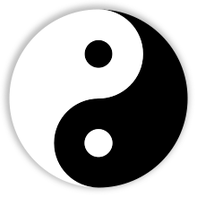 Do you know how to read this diagram? We often hear people talk about #YinAndYang. So what are they? This Tai Chi diagram called "#TaiJiTu" 太極圖 (or #TaiChi Tu which is more commonly known in Western countries) summarizes the meaning of Yin and Yang (陰陽學說). "Tu" in Chinese means diagram or picture. "Tai Chi" is not limited to the martial arts that you see people do in competitions or parks. In Chinese, Tai Chi means the ultimate absolute and potentiality which is Yin and Yang, the two extreme opposites. In the diagram, the white part on the left side of the circle denotes the Yang part, and the darker side denotes the Yin part. It's like a compass. At the south (6 o'clock) position, it's when the Sun starts to rise and we start to see some sunlight. That's also when the white or Yang part on the left side starts to increase its amount. Once it reaches its north (noon) position, it's noon time when the Sun is at its highest position in the sky and we get the most sunlight. Not only does it mean the white or Yang part is at its maximum amount, but it also means the evening time starts, and therefore the Yin part (the darker side) starts to increase its amount. The same philosophy continues to apply in a cycle when the evening time reaches its maximum at the south position (6 o'clock), and that's when the dawn starts again. This is just one phenomenon using the time clock to explain Yin and Yang. According to the theory of Yin and Yang, everything in this universe and all of the changes that take place in this world are categorized into Yin and Yang. Yin and Yang are two opposites but they are not separated. They contain each other (like the diagram showing the black dot in the white part, and the white dot in the black part of the diagram). They are interdependent, complimentary, and interacting with each other. They cannot exist without the other. They also transform into each other when reaching their maximum limit. Our ancient Chinese ancestors formulated this philosophical theory of Yin-Yang through long-term experience and observations and put together this backbone for the foundations of Traditional Chinese Medicine (TCM) when treating people's illnesses. In TCM, the balance of Yin and Yang is the key to treating illnesses and ailments. Illnesses and diseases arise when there is an imbalance between Yin and Yang. There could be, for example, an excess in Yang relative to Yin, or a deficiency in Yin relative to Yang causing certain health problems in the body. How can acupuncture treatment help in the imbalance of Yin and Yang? TCM practitioners insert acupuncture needles at certain body sites to regulate the energy flow (called Qi) through the meridians that exist in the body...like opening and closing a valve and redirecting the flow of water to regulate the pressure in a hydraulic system. Through the insertion and regulation of the acupuncture needles, the balance of Yin and Yang can be restored. Contact our clinic today to learn how acupuncture treatment could help bring the balance of Yin and Yang to your health conditions and how we could work towards improving your life quality! #TaiChi, #YinAndYang, #acupuncture, #TCM Do you have #ShoulderProblems? Today, more people are going for an alternative treatment that is non-conventional, non-drug therapy such as #acupuncture treatment to treat their shoulder pain. Adding acupuncture treatment as a supplementary remedy to your conventional Western treatment may benefit the outcome and the recovery of your shoulder problems.
Many studies in Western medicine show the effectiveness of acupuncture in treating shoulder problems. According to a recent study performed by NYU Langone Medical Center, “benefits have been seen in studies of people with tendonitis in the shoulder. A trial of 52 people with rotator cuff (shoulder) tendonitis found acupuncture more effective than sham acupuncture. In addition, a study compared superficial to deep-insertion acupuncture in 44 participants with shoulder pain and also found relative benefits, which lasted for at least 3 months. In another study, 117 people with rotator cuff injury (including tendonitis) were randomized to receive corticosteroid injections plus exercise or 10 acupuncture treatments plus exercise. Both groups experienced similar improvements in shoulder function and pain.” According to the World Health Organization (@WHO), acupuncture treatment has been proven effective through controlled trials for peri arthritis of the shoulder. In another 2004 report performed at the University of Osla, according to LIVESTRONG.com, acupuncture treatment “provides long-term relief effect for neck and shoulder pain” for the female office workers who had chronic neck and shoulder problems, and 70% of the women reported improvement. The shoulder problems can be caused by several reasons due to their anatomical structures. Your doctor may diagnose your shoulder problems with your medical history, physical examination, and ordering imaging tests such as X-rays, ultrasound, MRI, and blood work to rule out certain conditions. These are great tools to physically diagnose your shoulder problems. Your doctor may also have started treatment on you with RICE (rest, ice, compression, and elevation), pain medications, and physical therapy, and asked you to modify or avoid certain activities that may aggravate your signs and symptoms. Sometimes, if a condition gets worse, surgery may be suggested. However, according to Dr. Nicholas DiNubile, an orthopedic surgeon specializing in sports medicine, “a comprehensive examination and evaluation must precede any surgical procedure. In most cases, a more conservative, nonsurgical approach is warranted, including a good rehabilitation program.” Later he adds that “postoperative pain from shoulder procedures usually lasts longer than that for similar arthroscopic procedures in the knee”. He states that his patients complain of pain for weeks and even months with discomfort and difficulty moving the shoulder. Therefore, one must discuss in detail and evaluates all options and conditions with his or her doctor before considering surgery for the shoulder. While acupuncture treatment is a safe and non-drug therapy, it has been shown effective in enhancing the self-healing effect, reducing pain, swelling, and inflammation in our body, and reducing or avoiding the use of drugs. It can give you immediate relief and provide long-lasting benefits after treatment. My focus and interests in acupuncture have included #musculoskeletal pain management and #sports medicine acupuncture. I would be happy to work with you and discuss with your doctor how acupuncture treatment can be a supplementary treatment to your recovery from your shoulder problems. 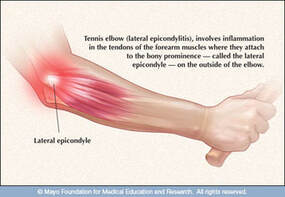 Now, let's talk more about the symptoms and how they are diagnosed and treated in Western and Eastern medicine. As shown in the picture by Mayo Clinic, the inflammation occurs "in the tendons of the forearm muscles where they attach to the lateral epicondyle." These muscles are called the "extensors of the wrist and hand". When these extensors are stressed repetitively, tennis elbow symptoms would gradually begin. The main symptom is of course #PAIN!! This pain may radiate down to the forearm, wrist, hand, or up to the shoulder or neck. To diagnose, a medical doctor may order X-ray imaging and blood tests to rule out bone fractures or other medical conditions, and MRI or EMG to rule out spinal injuries or pinched nerves. In many cases, the description of the pain by the patients, medical history, and physical exam are used to diagnose tennis elbow. How is it treated in Western Medicine? Treatments and medications include resting, ice treatment, NSAIDs (non-steroidal anti-inflammatory drugs), physical therapy, and modification of activities for an athlete. Occasionally, a#CortisoneInjection may be used in the painful area. According to The Merck Manual surgery may be considered if after 9 to 12 months of unsuccessful conservative treatment. For Traditional Chinese Medicine (TCM), the tennis elbow is identified as "Elbow Strain", "Elbow Taxation (Zhou Lao 肘勞), "Elbow Pain (肘痛), or a type of injury to the tendon and muscles (Shang Jin 傷筋). The strain and taxation in the elbow are described as overworking and overstraining which can cause the exhaustion of the Qi and Blood (energy flow and blood circulation) of the body, leading to the malnourishment of the body structures. A TCM practitioner may also evaluate and determine if any underlying conditions of the internal organ imbalances are involved. Although common structures are involved in the tennis elbow for everyone, the treatment strategy and planning can be very different based on individual cases and body constitutions since we are unique individuals. To treat tennis elbow in TCM, acupuncture is considered one of the modalities to alleviate pain symptoms. Other modalities include cupping, bleeding technique (not as awful as it sounds!), moxibustion, electric acupuncture, and auricular acupuncture may be considered. Different practitioners may use different modalities to treat based on the syndrome analysis obtained while doing the intake of the patient's chief complaints. The general treatment strategy is to soothe the tendons and activate the circulation of the body's meridians, energy flow, and blood circulation to reduce pain. Contact our clinic today for #FREE consultation with the promotion until the end of this August month! Visit www.TeeAcupuncture.com for more info. Share this news with your friends and family members. Stay healthy! #TCM, #acupuncture, #cupping, #moxibustion, #TennisElbow #Sprains and #strains according to @WebMD are used interchangeably to describe everything from a twisted ankle to a pulled hamstring, but they are two specific injuries.
A sprain is a stretch or tear in a ligament (the bands of fibrous tissue that connect our bones at the joints). A strain is also a stretch or tear, this time affecting the muscle itself or a tendon (the tissue that connects the muscles to the bones). |
AuthorDr. Kang P. Tee is a Doctor of Acupuncture and Chinese Medicine, New York State Licensed Acupuncturist and Board Certified Diplomate of Acupuncture and Herbalist by NCCAOM. His interests include musculoskeletal Archives
May 2015
Categories |
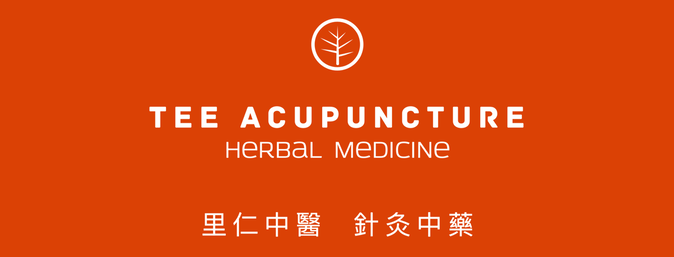
 RSS Feed
RSS Feed